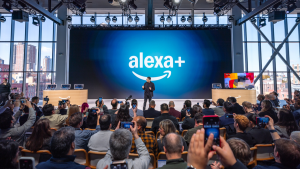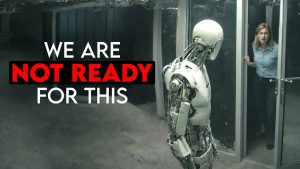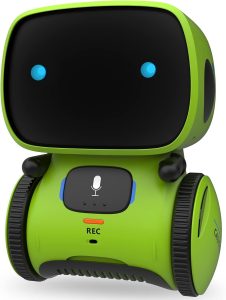DeepSeek Launches Free AI That Outperforms All Existing OCR Models

The Cutting-edge Innovations in AI: From Document Processing to Health Monitoring
Artificial intelligence (AI) is making waves across various sectors, presenting groundbreaking solutions that push the boundaries of how we interact with technology. This article explores several recent innovations, including DeepSeek’s OCR, Shang Shu’s VU Q2 video model, Google’s cancer-detection AI, and Coler’s smart toilet.
DeepSeek’s OCR: Transforming Document Processing
DeepSeek recently launched a revolutionary open-source AI model capable of transforming expansive documents. This innovative model can condense a thousand-word article into just about a hundred visual tokens, all while retaining approximately 97% of the original information. The implications for data teams are significant, especially when constructing pre-training sets, compliance archives, or research corpora.
The model operates by rendering text as images, which are then processed through a vision encoder that provides a streamlined output of vision tokens to the language model (LLM). This contrasts sharply with traditional methods that often require large amounts of token space, allowing DeepSeek to dramatically reduce the overhead involved in processing.
Utilizing a single NVIDIA A100 GPU, DeepSeek OCR achieves an impressive throughput of around 200,000 pages per day. Benchmarks indicate that this model outperforms many established solutions, requiring only about 100 vision tokens per page compared to 256 tokens needed by Goo OCR 2.0 and over 6,000 tokens for other models under similar conditions.
Flexible Outputs and Robust Training Data
What sets DeepSeek apart is its flexibility in output formats, allowing users to maintain original formatting, output plaintext, or receive generalized image descriptions. This adaptability enhances compatibility with existing tools, enabling easier integration into current workflows.
With a training dataset spanning approximately 30 million PDF pages across 100 languages, DeepSeek’s model demonstrates robust performance metrics, making it an appealing choice for both academic and corporate applications.
Shang Shu’s VU Q2: Next-level Video Creation
Shang Shu’s latest release, the VU Q2 video model, presents a powerful tool for creators. Unlike traditional video editing techniques, VU Q2 allows users to upload up to seven reference images, including faces, props, and scenes. It uses AI to ensure consistency across generated clips and offers the convenience of an API from launch, allowing seamless integration into existing digital asset management pipelines.
The model excels in real-world applications, as shown in a test involving a factory scene with a conveyor belt and various components. VU Q2 maintained clarity and consistency, outperforming competitors that struggled with rendering details such as non-Latin text.
The Importance of Multi-Entity Consistency
What makes VU Q2 particularly compelling is its ability to create fluid transitions and maintain multi-entity consistency—key factors for narratives in video content. With VU Q2, editors can manipulate a video scene without cumbersome prompt gymnastics, providing a smoother editing experience.
This capability spans across both English and Chinese languages, making it an attractive option for brands targeting diverse demographics. Fast turnaround times and reasonable pricing compared to competitors make VU Q2 a formidable contender in the video generation landscape.
Google’s Deep Somatic: Advancing Cancer Detection
In a compelling leap into the medical domain, Google Research, in collaboration with UC Santa Cruz, has unveiled Deep Somatic, a sophisticated AI tool designed for reading cancer genomes. Unlike traditional methods that analyze raw DNA text, Deep Somatic converts these genetic sequences into images, enabling a convolutional neural network to identify genuine mutations versus noise effectively.
Deep Somatic demonstrates exceptional accuracy across various platforms, achieving impressive performance metrics not only in identifying known mutations but also in detecting new variants that were previously overlooked by other tools. This advancement holds promise for laboratories seeking fast, accurate insights into cancer behavior and treatment options.
Coler’s Smart Toilet: Data-Driven Health Insights
Among the latest products set to disrupt conventional wellness monitoring is Coler’s smart toilet, Dakota. Designed to analyze waste for hydration levels, gut health, and even traces of blood, Dakota represents an intriguing evolution in personal health tech. With a price tag starting at $599, it employs AI to monitor users’ physiological states passively.
The device mounts discreetly over most toilet rims, featuring a camera aimed to capture only the contents of the bowl. With features like fingerprint authentication for multiple users, end-to-end encryption for data security, and a companion app that presents user data visually and provides trend analysis, Dakota is aimed at the premium wellness market.
Broader Implications for Preventative Health
Coler’s smart toilet signifies a growing trend toward preventative health monitoring within the home. Similar to high-end wearables, Dakota seeks to prompt users to engage with their health early on. Despite valid privacy concerns, Coler emphasizes optical design to alleviate fears, making it a promising player in a sector dominated by rival products, such as Throne.
Conclusion
The recent innovations in AI showcased in this piece—from advanced document processing and video generation to cancer detection and health monitoring—highlight a transformative wave in technology. Companies like DeepSeek, Shang Shu, Google, and Coler are not only redefining their respective fields but also collectively pushing the envelope on what is possible through AI. As these tools become integrated into everyday life, they promise to enhance efficiencies, improve health outcomes, and provide new ways to interact with digital content.
#DeepSeek #Dropped #Free #Destroys #OCR #Model
Thanks for reaching. Please let us know your thoughts and ideas in the comment section.
Source link






I'm lucky enough to be the first again! Thanks YouTube ❤❤❤
Your audience can always rely on your content for a moment of peace and positivity 🔥⚡
I'll stick with gronk
Can I use the DeepSeek ocr and the visual model via openrouter?
The Dekoda appears quite interesting. Thank you for this summary.
The best thing about chatGPT was that it recommended me some great musicians that I never would have known anything about. Other than that, it sucks. Still not there and, probably, won't be for the next 20 years. We will be lucky if it will ever be able to code effectively.
tested the OCR on medic recipes, it cant do it
Thought compression algorithm from AI not surprising.
97% accuracy = less useful than Adobe software from 1999. Translating text to images is essentially dumb and wasteful.